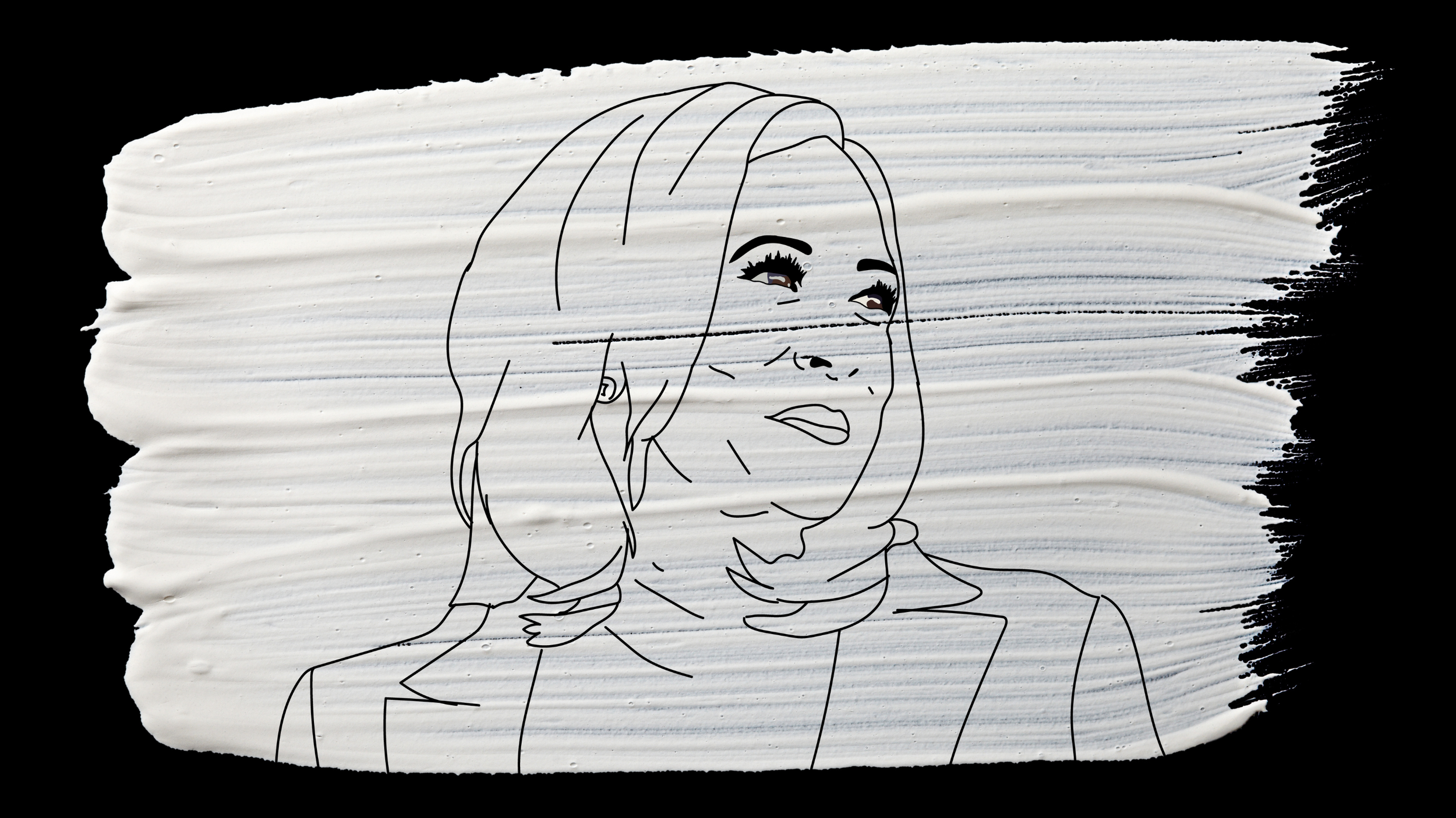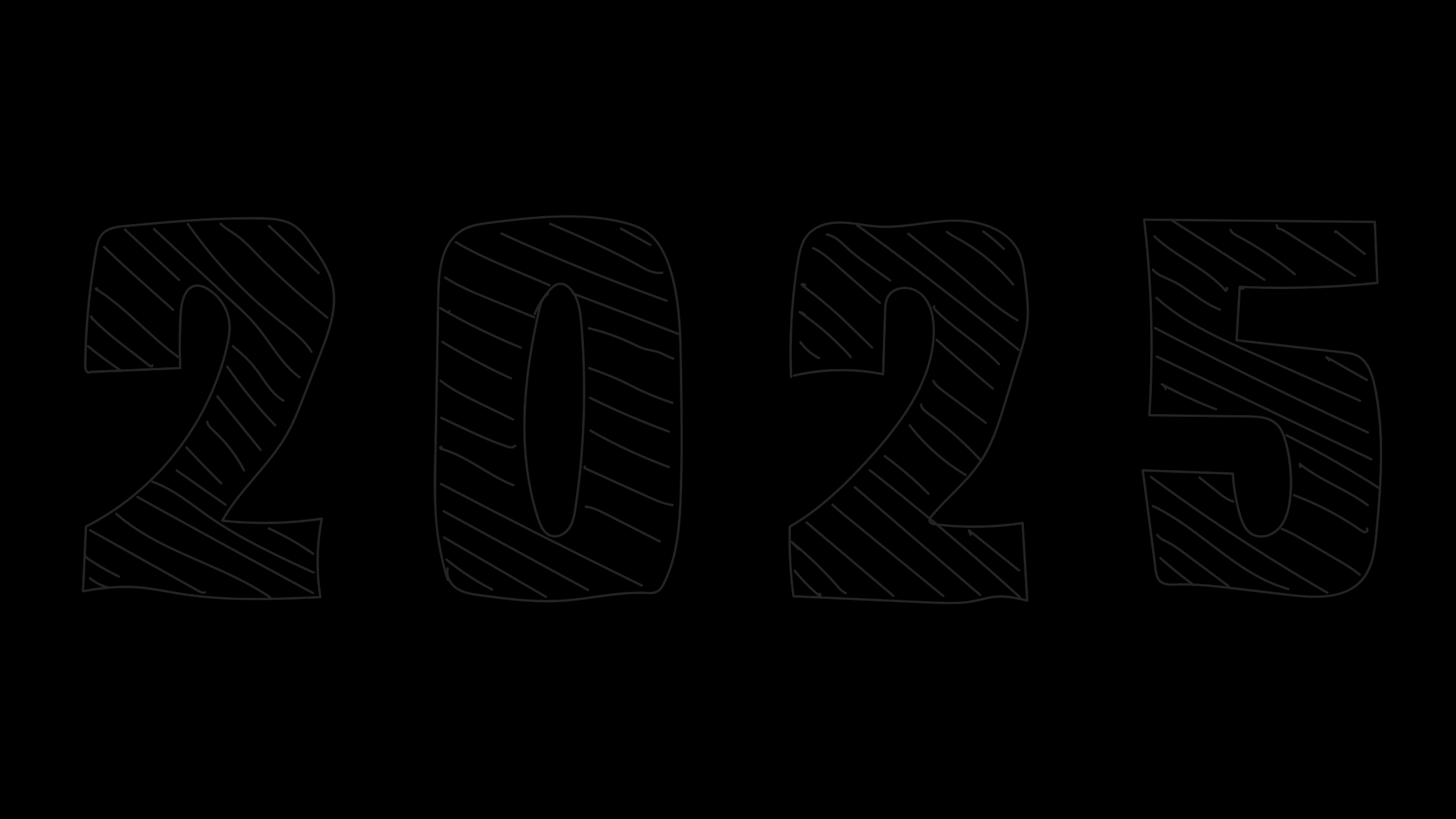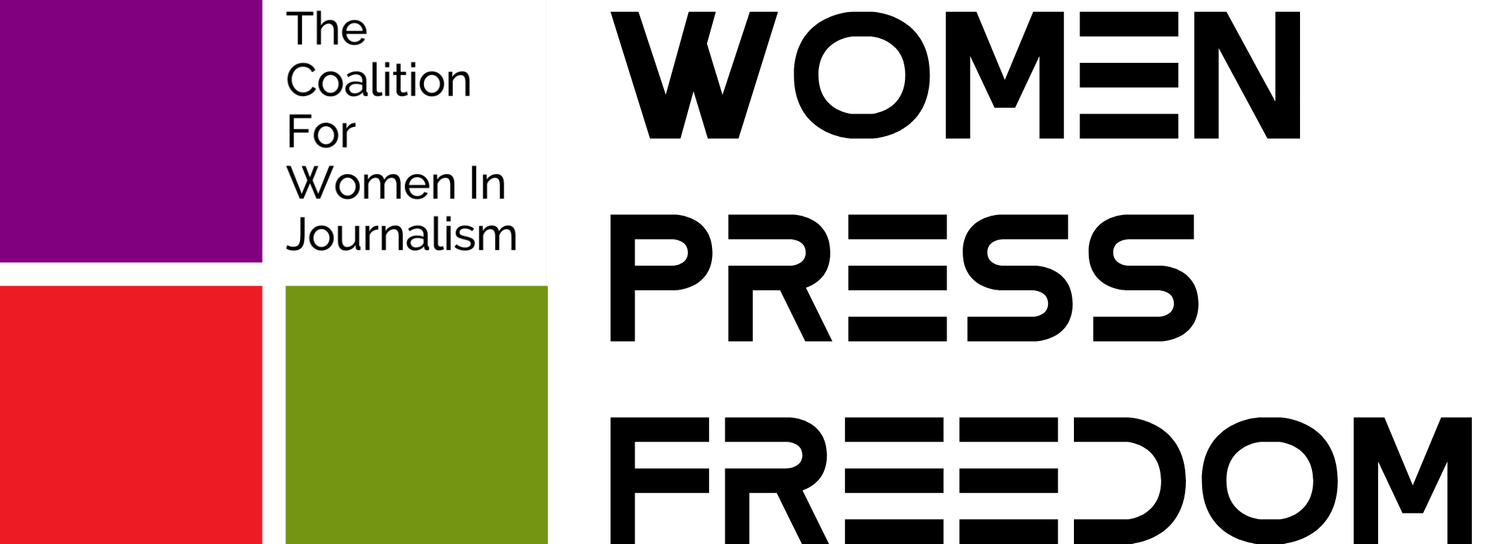
Kamala Harris vs. Trump: The Future of Press Freedom and Women Journalists Hangs in the Balance
By: Máire Rowland and Inge Snip
As the 2024 election approaches, the race between Kamala Harris and Donald Trump represents, for us at Women Press Freedom, a critical juncture for the future of press freedom in the United States. At the Coalition for Women in Journalism, we are evaluating what the climate will look like for women and LGBTQI+ journalists under either presidency. Our key focus is identifying the most pressing challenges that need to be addressed to safeguard the safety and integrity of journalistic work. This report assesses the track record of each candidate to provide insights into the future of press freedom as America enters a new political era.
For Kamala Harris, while she has supported protections for journalists, she also faces criticism for transparency issues. On the other hand, Donald Trump’s return raises grave concerns, particularly with the looming threat of Project 2025, which aims to dismantle independent journalism by defunding public media, stripping source protections, and restricting press access.
This report covers critical findings from 2019 to 2024, showing how violations against journalists, especially women and marginalized reporters, surged during Trump’s presidency. His rhetoric fueled hostility toward the media, and Project 2025 threatens to institutionalize these tactics, undermining press freedoms in ways reminiscent of authoritarian regimes.
At this critical juncture, the choice between Kamala Harris’ commitment to press protections and Donald Trump’s authoritarian agenda will shape the media landscape for years to come. The stakes for a free and independent press have never been higher.

Kamala Harris
Support for Journalists: Brokered the release of Alsu Kurmasheva but faced criticism for transparency issues.
Misinformation & Disinformation: Supported initiatives to curb disinformation.
Media Avoidance: Accused of limiting press access during her 2024 campaign, drawing criticism for lack of transparency.
Future Policies & Promises: Harris has promised to continue fighting for truth, transparency, and the protection of journalists, emphasizing the need for strong safeguards against misinformation while balancing press freedom.
Donald Trump
Targeting Women Journalists: Frequently harassed women journalists, leading to online abuse.
Obstructed Press Access: Blocked media access at briefings and rallies; called for firings of critical reporters.
Anti-Press Rhetoric: Labeled the press as “enemies,” fostering a hostile environment for journalists.
Project 2025:
Media Control: Proposes greater executive control over agencies like the FCC to target critical media.
Defunding Public Media: Aims to defund NPR and PBS, undermining public journalism.
Legal Threats: Encourages lawsuits against journalists (SLAPPs), mirroring tactics from authoritarian regimes.
Press Freedom in 2024 – What Has Happened and What Must Be Done
Since Women Press Freedom began documenting press violations in 2019, we've seen a disturbing pattern: press freedom violations in the United States surged during the presidency of Donald Trump, particularly in the aftermath of George Floyd’s killing. These violations were not only more frequent but also more violent, with many stemming directly from Trump, his supporters, and Republican politicians.
However, the transition to President Biden did not mark the end of these attacks. In fact, our data shows a worrying trend — violations against women journalists have increased dramatically in 2024. By July 2024, there were 48 documented violations against women journalists, surpassing the total of 31 recorded in all of 2023.
The vulnerability of journalists — especially women — when covering protests remains a grave concern. In 2024, we're witnessing a similar pattern of press freedom violations that occurred during the Black Lives Matter protests. Women journalists covering pro-Palestinian campus protests are now experiencing increasing arrests, detentions, and physical assaults. Notably, journalists are more likely to encounter police violence or arrest when reporting on leftist or social justice movements, such as those related to race or reproductive rights.
In addition to physical threats, the Biden administration has overseen a troubling rise in legal challenges against the press. Access to public information has become increasingly complex. Pittsburgh journalist Brittany Hailer and the staff at The Reporter in New York have gone to the courts to battle gag orders that undermine democracy by restricting the public’s right to know. These journalists should not have to take on the financial and legal burden of challenging the government who are unfairly, and unconstitutionally, limiting the rights of their employees to speak freely to the press.
Even more concerning are court orders targeting journalists' confidential materials, putting their sources at risk. Pulitzer Prize winner Anna Wolfe and former Fox News reporter Catherine Herridge are among those who have faced such unconstitutional demands.
These alarming cases hammer home the urgent need to pass the PRESS Act — a federal shield law designed to protect journalists’ communications from government interference, except in national security cases. Although it has bipartisan support and passed the House in January 2024, it remains stalled in the Senate.
Women Press Freedom, alongside the Freedom of the Press Foundation, called on Senator Dick Durbin in May 2024 to push this vital legislation forward.
From 2019 to 2024, press freedom violations in the United States exhibit a distinct pattern, with no documented violations from members of the Democratic Party, but a significant number tied to Republican politicians, law enforcement, Trump, and far-right individuals. The violations peaked in 2020, during the Trump presidency, with law enforcement and government officials being the most frequent perpetrators. Trump himself was implicated in 14 cases in 2020, aligning with the intense media scrutiny surrounding his administration. Far-right individuals consistently contributed to violations across the years, while left-wing incidents were rare but did increase slightly in 2020 and 2024.

Major Cases
Biden-Harris
Catherine Herridge was held in contempt for refusing to reveal sources from a 2017 report on ties between an online school and the Chinese military. The court imposed an $800 daily fine, paused pending appeal, raising concerns about threats to press freedom and source confidentiality.
In June 2024, a Mississippi court ordered journalist Anna Wolfe and her team to reveal sources in a defamation lawsuit filed by former Governor Phil Bryant. The court cited the lack of First Amendment protections in Mississippi, exposing a gap in press protections.
On October 27, 2023, Sherry Digmon, co-owner of Atmore News, was arrested in Alabama for an investigation into COVID relief fund misuse. Although charges were dropped in April 2024, the case underscores how vulnerable First Amendment rights are to legal retaliation, jeopardizing journalists' ability to hold powerful institutions accountable.
Cerise Castle faces harassment and surveillance by the Los Angeles County Sheriff's Department after her exposé on deputy gangs. Despite denials from LASD, internal emails showed high-ranking officials monitored Castle and her associates, raising serious concerns about press freedom and deterring investigative journalism.
Trump-Pence
Photojournalist Linda Tirado, shot in the eye and severely injured by Minneapolis police during the 2020 George Floyd protests, is now receiving palliative care due to worsening health conditions, including dementia. Her injury highlights ongoing concerns about police violence against journalists during social justice demonstrations.
The Trump administration's DOJ secretly fought to access CNN reporter Barbara Starr's phone and email records for months, targeting her 2017 communications without her knowledge. The case, which began in July 2020, raises significant concerns about state-level intimidation of journalists.
Jean Carroll sued former President Trump for sexual assault and defamation, stemming from an 1990s assault. The case fits a broader pattern of Trump’s behavior toward the press and women, as he has often discredited accusers and publicly attacked those who challenge him.
In 2023, Sky News reporter Sophie Alexander was assaulted and harassed by Trump supporters in Miami after asking the former president if he was "ready to go to jail." Alexander was grabbed and insulted, reflecting a broader pattern of violence and intimidation against journalists covering Trump. His long-standing attacks on the press foster a toxic environment, particularly for women and LGBTQI journalists.
Kamala Harris and the Complexities of Press Freedom: A Balancing Act in the Age of Disinformation
Alsu Kurmasheva’s release in the recent U.S.-Russia prisoner exchange — attained in part through collective, relentless advocacy by WPF, CFWIJ, and other human rights and press freedom organizations — alongside Wall Street Journal reporter Evan Gershkovich and others, marks a significant milestone in the Biden-Harris administration’s ongoing efforts to safeguard human rights and protect journalists, particularly women in the field.
Kamala Harris has consistently demonstrated her commitment to press freedom and transparency. In June 2018, she publicly condemned the shooting at the Capital Gazette in Annapolis, Maryland, emphasizing the importance of protecting journalists and ensuring they can work without fear of violence. As California's Attorney General, Harris supported the California Public Records Act and initiatives to improve government transparency, launching the OpenJustice platform to provide the press and the public with data on criminal justice to "strengthen trust, enhance government accountability, and inform public policy." Additionally, her development of the California Department of Justice's Privacy Enforcement and Protection Unit focused on protecting privacy rights and addressing data breaches — critical issues in today’s digital landscape. Upon being elected to the U.S. Senate, she reiterated her dedication to "fighting for truth, transparency, and trust."
However, Harris’ record on free speech has drawn criticism, particularly from conservative and right-wing circles. In 2021, as Vice President, Harris backed the Biden administration’s push to hold social media platforms accountable for spreading COVID-19 misinformation. While seen as a necessary move to combat dangerous disinformation threatening public health, conservative critics, including the House of Representatives Committee on the Judiciary and the Select Subcommittee on the Weaponization of the Federal Government, argued that it infringed on free speech, accusing the administration of stifling viewpoints and encroaching on First Amendment rights.
Harris’ balancing act between promoting press freedom and addressing harmful misinformation reflects the complexities of promoting a healthy and truthful information sphere in modern society. As advocates for women and LGBTQI journalists, we recognize the importance of her initiatives in curbing disinformation and online abuse, which disproportionately targets these communities. Her efforts, including the White House Task Force to Address Online Harassment and Abuse, while criticized by conservative voices, are crucial in defending journalists who face constant threats, doxxing, and ideological attacks in today’s polarized digital landscape.

Supreme Court Reconsiders Priscilla Villarreal’s Trump-Era Arrest Amid Escalating Court Actions Against Press Under Biden
Priscilla Villarreal, a citizen journalist from Texas known for her reporting on marginalized communities, was arrested in 2017 during the Trump administration for publishing nonpublic information about a federal official's suicide. The charges were later ruled unconstitutional, but her arrest raised serious concerns about press freedom. In January 2024, under the Biden-Harris administration, the Fifth Circuit Court of Appeals denied her damages in a lawsuit challenging her wrongful arrest. We view this ruling as a troubling precedent that undermines journalistic freedom and shields law enforcement from accountability. However, in October 2024, the U.S. Supreme Court directed the Fifth Circuit to reconsider the case. This decision is a critical step toward protecting the rights of journalists and ensuring that law enforcement cannot target those who report on government actions.

Tim Walz: A Champion of Press Access, Controversial on Transparency
Governor Tim Walz has built a reputation for supporting the media, a stance that has defined his political career since he first entered Congress in 2006. Walz has consistently advocated for press freedom, making himself accessible to reporters and engaging with the media in a way that few politicians do. However, his firm stance on combating misinformation and hate speech has sparked a heated debate about the balance between regulating harmful content and preserving free speech — a debate that has followed him into his current position as governor of Minnesota.
During the 2020 Black Lives Matter protests in the wake of George Floyd’s murder, Walz faced one of his most high-profile media controversies. In a chaotic moment that encapsulated the fraught relationship between law enforcement and the press during protests, Minneapolis police arrested a CNN crew live on-air for allegedly not following dispersal orders. In the aftermath, Walz took swift action, publicly apologizing for the incident. He didn’t stop there — he sat down for an interview with one of the arrested journalists and offered a direct apology, acknowledging the crew’s rights and the importance of press freedom during moments of national crisis.
This act of contrition, combined with Walz’s overall openness with the press, bolstered his image as a media-friendly politician. Reporters have noted that Walz often provides access not just to his policies but to his personal life, which has made him more relatable to the public. A New York Times article detailed how Walz is on a first-name basis with many local reporters, underlining the rapport he’s cultivated with the press. For many, this access to Walz is more than just a political strategy—it reflects his belief in the importance of a free and independent press as essential to democracy.
However, not all of Walz’s actions have been as transparent as his media engagements might suggest. Despite his early promises to maintain transparency in government, there have been instances where his administration fell short. For example, Walz pledged to release his daily internal schedule but later failed to do so. Reporters have also encountered challenges in accessing public records under his administration, with some saying that key documents they believe existed were mysteriously “not found.” These lapses have drawn criticism and raised questions about his commitment to government transparency, despite his otherwise open relationship with the press.

Carolyn Sung’s Arrest During Protests Leads Gov. Waltz to Address Failures and Strengthen Protections for Journalists
In April 2021, CNN producer Carolyn Sung was violently arrested while covering the Daunte Wright protests, despite identifying herself as press with visible credentials. After being pushed to the ground, bound, and racially profiled by Minnesota police, Sung was taken to jail, searched, and forced to wear an orange jumpsuit. Her arrest, part of a broader pattern of police mistreatment of journalists, has drawn widespread condemnation, with many calling it an attack on press freedom and an anti-Asian crime. Minnesota Governor Tim Waltz expressed regret over the incident and pledged to work with law enforcement and media to protect journalists.
Trump’s War on Women Journalists: A Pattern of Harassment and Intimidation
Between 2019 and 2020, former President Donald Trump’s relationship with the press reached new lows, with his administration engaging in an alarming pattern of harassment and intimidation aimed at women journalists. Documented extensively by Women Press Freedom, these attacks went beyond mere criticism, frequently involving verbal insults, online abuse, state actions, and efforts to obstruct reporters from doing their jobs. Trump's targeting of women journalists, many of whom were women of color, reflected a dangerous disregard for press freedom and highlighted the administration's attempts to discredit and undermine critical voices in the media.
One of the most striking aspects of Trump’s hostility toward women journalists was the frequent verbal harassment, which often occurred during press briefings or through his prolific use of social media. PBS reporter Yamiche Alcindor, was frequently targeted.
Trump’s hostility toward women journalists was not confined to insults and online harassment; it also manifested in more formal, state-driven actions. Finnish journalist Jessikka Aro, who had been selected to receive the prestigious International Women of Courage Award for her reporting on Russian disinformation, had her award revoked by the Trump administration in 2020. This happened after Aro publicly criticized Trump, illustrating the administration’s willingness to use state mechanisms to suppress critical voices. Similarly, Fox News reporter Jennifer Griffin became a target when she corroborated a story that painted Trump in an unflattering light. Trump publicly called for her firing, leveraging his platform to directly threaten a journalist’s livelihood.
WPF data reveals that 70% of organized troll campaigns targeting women and LGBTQI journalists in the US are disproportionately driven by right-wing actors, with the majority tied to conservative agendas, misogyny, and anti-vax rhetoric.
In one incident during a 2020 press briefing, Trump dismissed one of Yamiche Alcindor's questions as "nasty," a word he often used to degrade women reporters who challenged him. NBC’s Hallie Jackson faced similar attacks, with Trump accusing her of pushing "racist" narratives in February 2020. These encounters were not isolated—Trump’s pattern of using insults like "fake" and "disgraceful" became a trademark of his interactions with the press, as demonstrated when CBS’s Paula Reid pressed him on the government’s COVID-19 response.
Beyond the verbal attacks during press briefings, Trump used social media, particularly Twitter, to amplify his disdain for women journalists. When he attacked journalists online, it often sparked waves of harassment from his supporters, turning routine reporting into a dangerous venture for those in his crosshairs. Gillian H. Turner of Fox News was one such target in February 2019, when Trump’s tweet led to a flood of online abuse against her. Similarly, NBC’s Kristen Welker, who moderated the final 2020 presidential debate, faced smear campaigns on Twitter spurred by Trump’s rhetoric. His personal targeting of journalists like Joy-Ann Reid and Lesley Stahl escalated these confrontations, with his tweets inflaming hostility among his followers and adding fuel to an already hostile media environment.
In a more personal act of intimidation, White House counselor Kellyanne Conway took the attacks on the press a step further when she threatened Washington Examiner reporter Caitlin Yilek in a phone call about Yilek’s reporting on Conway’s potential departure from the administration. During the call, Conway threatened to release personal information about the journalist, crossing ethical lines and revealing the administration's willingness to engage in personal attacks against members of the press.
Trump’s efforts to stifle critical reporting also extended to direct impediments on press access, often using physical and operational means to block journalists from doing their jobs. CNN’s Kaitlan Collins, for instance, was targeted during an April 2020 press briefing when she was asked to relinquish her front-row seat—a move seen as a deliberate effort to hinder her access to the briefing. Kathy Gray, a reporter for The Detroit Free Press, was kicked out of a Trump rally in September 2020 after the campaign identified her via tweeted photos she posted of the event.

PROJECT 2025
Catherine Herridge — who uncovered critical stories about government misconduct — found herself in a courtroom, not for breaking a law, but for protecting the very sources who trusted her to speak truth to power. The confidentiality of those sources, the bedrock of investigative journalism, is already hanging by a thread. Now, consider that this could become the norm, not the exception, under the radical policies proposed in Project 2025, a sweeping vision for reshaping the U.S. government laid out by the Heritage Foundation.
Project 2025 doesn't just threaten press freedom — it aims to rewrite the rules. From forcing journalists to reveal their sources to stripping funding from public media and shrinking press access to the highest levels of government, the project is a blueprint for undermining a free and independent press. At its core is the erosion of the protections that make investigative journalism possible, protections that have already been tested in recent high-profile cases.
The tactics outlined in Project 2025 bear striking similarities to those used by authoritarian regimes worldwide. From Hungary to India, governments have systematically weakened media independence by defunding public broadcasters, restricting press access, and targeting dissenting journalists. In Argentina, under Javier Milei’s administration, a similar assault on public media is underway, with the closing of public TV and the spread of rhetoric against independent journalists. Project 2025’s proposals mirror these trends, raising concerns about the erosion of democratic institutions in the U.S.

Surveillance, Prosecution, and Source Confidentiality
Project 2025 clarifies that the next conservative administration intends to ramp up efforts to clamp down on leaks. This includes rescinding current guidance that limits investigators' ability to uncover the identities of sources. Further emphasis on counterintelligence to investigate leaks suggests a future where journalists are more frequently surveilled and prosecuted. This authoritarian shift would severely undermine the ability of journalists to report on matters of public interest without fear of government retaliation.
Legal and Structural Barriers to Press Access
The plan proposes reevaluating the long-standing practice of providing workspace for the press in the White House — a move that would restrict journalists’ access to executive decision-making. This echoes the Trump administration's antagonism toward the media, where reporters were frequently barred from briefings or denied access. However, Project 2025 takes this even further by suggesting a more formalized reduction in media presence within the government.
Defunding Public Media and Local Journalism
Project 2025 includes a concerted effort to defund public media outlets. Chapter 8 of the plan explicitly calls for defunding the Corporation for Public Broadcasting (CPB). By defunding CPB, Project 2025 would not just harm large outlets like NPR; it would accelerate the decline of independent, local journalism, opening the door for syndication giants to monopolize local news markets. Independent journalists, often women, working on underreported issues—from Indigenous rights to gender-based violence—are particularly vulnerable to these cuts. Removing public support would exacerbate the crisis, leaving these critical stories untold.
SLAPPs and Legal Harassment
Strategic Lawsuits Against Public Participation (SLAPPs) are another tool of suppression that Project 2025 is likely to amplify. SLAPPs are often used to silence journalists through costly legal battles. Women Press Freedom has extensively documented how SLAPPs disproportionately affect women journalists covering gender-based violence, corruption, and human rights issues. With Project 2025’s focus on deregulating the press and empowering the executive to control media narratives, the legal landscape for journalists may grow even more hostile.
2024: A Turning Point for Independent Journalism
Women Press Freedom and the Coalition For Women In Journalism believe it becomes clear that the 2024 election will have profound consequences for press freedom in the United States. Kamala Harris's and Donald Trump's contrasting approaches present a pivotal moment for the future of independent journalism. Below, we summarize the most pressing challenges and what is at stake for journalists, particularly women and marginalized reporters, in the years ahead.
Project 2025 poses an existential threat to the free press, aiming to defund NPR and PBS, increase government surveillance, and strip source protections — mirroring authoritarian regimes in Hungary and Argentina. Journalists like CNN’s Barbara Starr, whose communications were secretly seized under Trump, offer a grim preview of what this future might hold.
Donald Trump's rhetoric labeling the press as “enemies of the people” has directly contributed to a 65% increase in harassment against women journalists during his presidency. This hostility has only escalated in the years following, with far-right actors continuing to target marginalized journalists with online abuse and physical threats.
Under Kamala Harris, while press access concerns persist, her administration has shown a commitment to curbing disinformation and protecting journalists like Alsu Kurmasheva. However, criticisms around transparency remain, particularly in her initial handling of media during the 2024 campaign.
SLAPPs and legal harassment continue to threaten journalists, especially women reporting on gender and corruption. Project 2025’s proposed legal landscape could make this even worse, weaponizing lawsuits to silence critical reporting.
Surveillance and prosecution of journalists under the guise of national security have become more frequent, as seen in cases like Cerise Castle, who was harassed for exposing deputy gangs. Project 2025 seeks to institutionalize such tactics, pushing the U.S. closer to authoritarian norms.

About CFWIJ
The Coalition For Women In Journalism is a press freedom advocacy and support organization, for women and non-binary journalists. Our Women Press Freedom initiative monitors and reports on press freedom violations covering 145 countries around the world. Our advocacy support work has helped journalists get released from prison, provided safety for those targeted in their own countries and relocated hundreds of journalists facing circumstances that threaten their lives, including those fleeing Taliban in Afghanistan, the regime in Iran, the war in Ukraine and different conflicts in the Middle East.
Journalists can report an incident or reach out for help via our website.
Our global peer-support networks engage and assist hundreds of women and non-binary journalists in different regions around the world. Last year we launched the Kathy Gannon Legacy Award which celebrates women and non-binary journalists for their remarkable journalism, as well as their commitment to supporting their peers. We will be expanding our awards in the coming years to celebrate great journalism done by women and non-binary journalists.














